Belgium, a small yet enchanting country in Western Europe, is often described as the heart of Europe. Bordered by France, Germany, Luxembourg, and the Netherlands, this nation offers a rich tapestry of history, culture, and gastronomy that reflects its diverse population. With its charming medieval towns, vibrant cities, and stunning architecture, Belgium is a must-visit destination for travelers seeking a unique European experience.
Belgium is divided into three main regions: Flanders in the north, Wallonia in the south, and the Brussels-Capital Region. This division not only affects the language spoken—Dutch in Flanders, French in Wallonia, and a mix of both in Brussels—but also the cultural traditions and culinary specialties found throughout the country.
Table of Contents
Geography
Belgium covers an area of approximately 30,528 square kilometers and is located in the heart of Western Europe. The country’s geography is characterized by flat plains in the north and rolling hills in the south. Its proximity to major European cities such as Paris, Amsterdam, and London makes it an important transport hub, with excellent rail and road networks connecting it to neighboring countries. Belgium is also crisscrossed by rivers, including the Scheldt, Meuse, and Sambre, which have played a crucial role in its historical trade and commerce.
States of Belgium
Belgium is divided into three regions, which are further divided into ten provinces. Here are the regions and their respective provinces:
| Region | Province | Language |
|---|---|---|
| Flanders | Antwerp | Dutch |
| East Flanders | Dutch | |
| West Flanders | Dutch | |
| Flemish Brabant | Dutch | |
| Limburg | Dutch | |
| Wallonia | Hainaut | French |
| Liège | French | |
| Luxembourg | French | |
| Namur | French | |
| Walloon Brabant | French | |
| Brussels-Capital Region | N/A | Bilingual (Dutch & French) |
History
Belgium’s history is a fascinating story of conquests, cultural exchanges, and economic developments. The region has been inhabited since prehistoric times, with evidence of Celtic tribes and later Roman settlements. In the Middle Ages, Belgium became a center of trade and commerce, with cities like Bruges, Ghent, and Antwerp flourishing as important trading hubs.
The region experienced a significant cultural and economic transformation during the Burgundian and Habsburg periods. The 15th and 16th centuries saw the emergence of a flourishing artistic movement known as the Northern Renaissance, with artists like Jan van Eyck and Pieter Bruegel the Elder gaining prominence.
However, Belgium’s history was not without conflict. The country was a battleground during the Eighty Years’ War, which led to the separation of the northern and southern provinces. The southern provinces eventually became the modern-day Belgium, which gained independence from the Netherlands in 1830. This tumultuous past has shaped Belgium’s identity as a multicultural and multilingual nation.
Cultural Diversity and Language
Belgium’s cultural diversity is one of its most defining features. The population is divided into three main linguistic communities: the Dutch-speaking Flemish, the French-speaking Walloons, and the German-speaking community. This linguistic divide influences not only daily life but also politics, education, and media.
The capital, Brussels, serves as a bilingual city, with both French and Dutch widely spoken. This linguistic duality reflects the country’s complex history and ongoing political negotiations between the different communities.
Cultural festivals, art exhibitions, and culinary events celebrate this diversity throughout the year. Events like the Carnival of Binche, the Ommegang festival in Brussels, and the Gentse Feesten in Ghent showcase the rich traditions and customs of the various regions.
Top Ten Must-Visit Destinations
Belgium is a country rich in history, culture, and stunning landscapes, making it an intriguing destination for travelers. Beyond its vibrant cities, Belgium boasts a variety of remarkable destinations that showcase its heritage, natural beauty, and culinary delights. Here are the top ten must-visit destinations in Belgium:
- Bruges

Bruges, often referred to as the “Venice of the North,” is a medieval city renowned for its picturesque canals, cobbled streets, and stunning architecture. Visitors can explore the Markt square, climb the Belfry for breathtaking views, and visit the Basilica of the Holy Blood, which houses a revered relic. A boat tour along the canals offers a unique perspective of this charming destination.
- Ghent
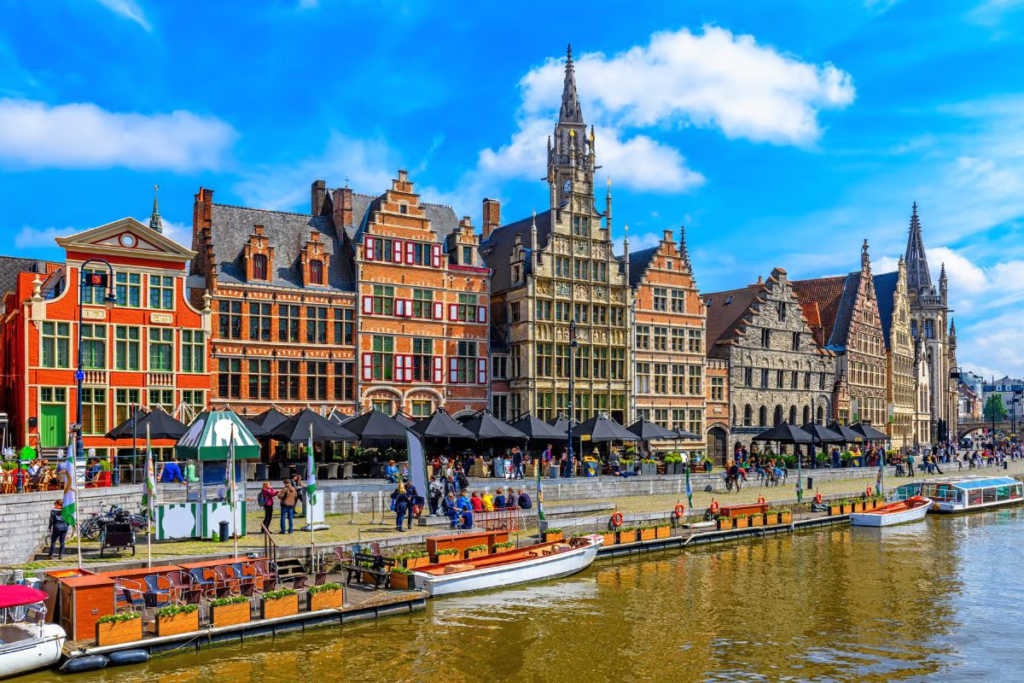
Ghent is a vibrant destination that seamlessly blends history and modernity. The medieval Gravensteen Castle stands as a testament to its rich past, while the lively atmosphere of the city is enhanced by trendy shops and cafes. Don’t miss the stunning St. Bavo’s Cathedral, home to the famous altarpiece “The Adoration of the Mystic Lamb,” a masterpiece of Flemish art.
- Antwerp Zoo
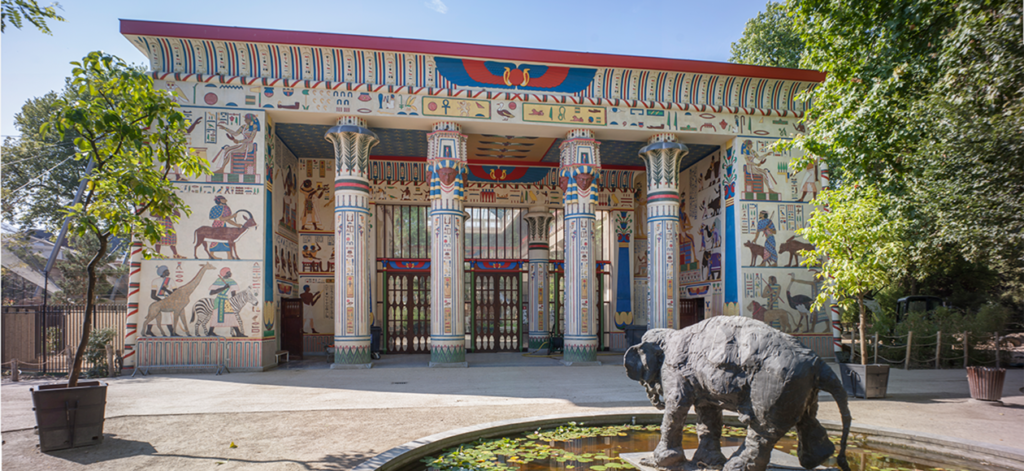
Located in the heart of Antwerp, the Antwerp Zoo is one of the oldest zoos in the world. Established in 1843, it features a diverse range of animal species, beautifully landscaped gardens, and historic architecture. The zoo is a great destination for families and animal lovers, offering a unique opportunity to learn about wildlife conservation.
- Dinant
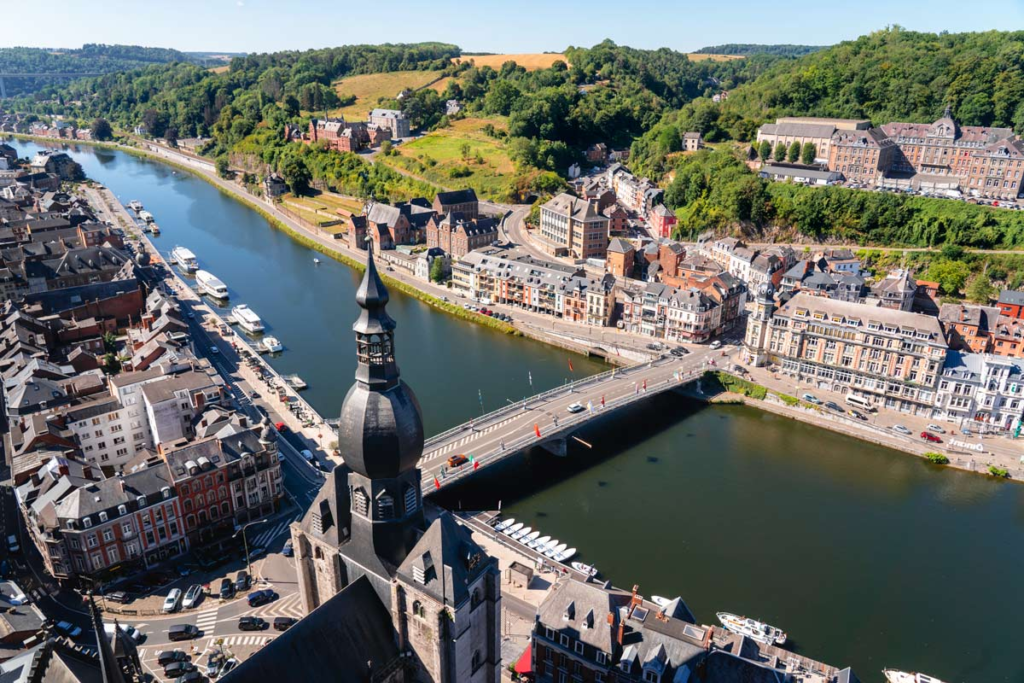
Nestled along the Meuse River, Dinant is a picturesque town known for its dramatic cliffs and stunning architecture. The iconic Collegiate Church of Notre Dame, with its striking dome, dominates the skyline. Visitors can explore the Citadel of Dinant, which offers panoramic views of the surrounding landscape, or enjoy a scenic boat ride on the river.
- Castle of Gravensteen

Located in Ghent, the Castle of Gravensteen is a medieval fortress that dates back to the 12th century. This well-preserved castle features thick walls, a moat, and an impressive interior showcasing the history of the region. Visitors can explore the castle’s dungeons, learn about medieval life, and enjoy panoramic views from the battlements.
- La Roche-en-Ardenne
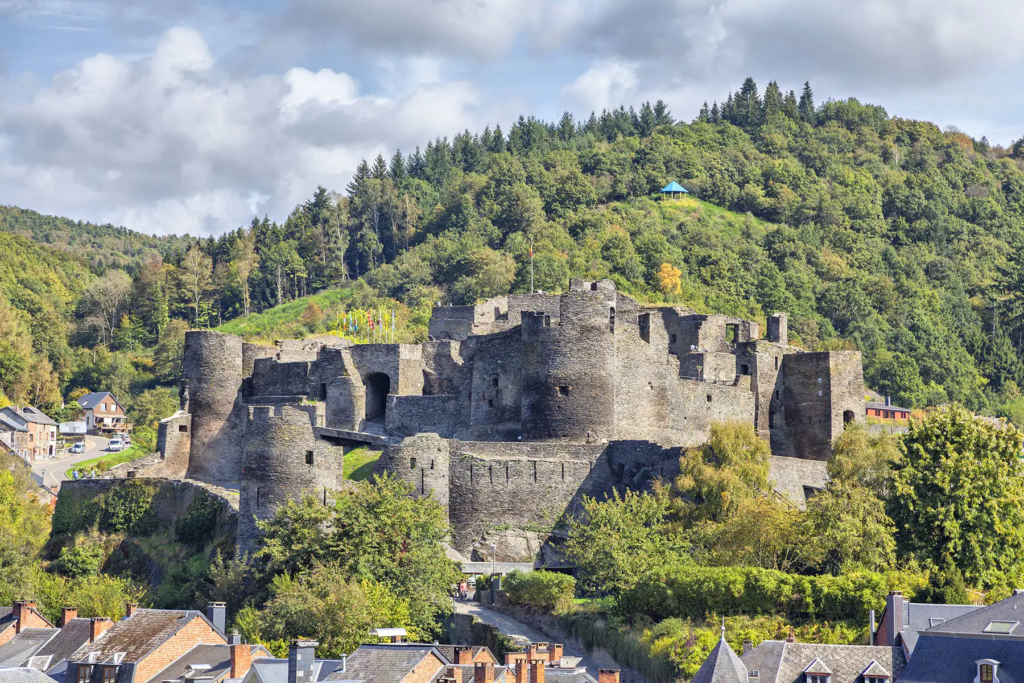
La Roche-en-Ardenne is a charming town situated in the heart of the Ardennes region. Known for its stunning natural landscapes, it offers outdoor activities such as hiking, kayaking, and mountain biking. The medieval La Roche Castle overlooks the town, providing a glimpse into its rich history and offering breathtaking views of the surrounding countryside.
- Mechelen

Mechelen is a hidden gem with a rich history and beautiful architecture. The city is home to the impressive St. Rumbold’s Cathedral, famous for its towering bell tower. Visitors can explore the charming streets, visit the Kazerne Dossin, a memorial to Holocaust victims, and enjoy the lively atmosphere of the city’s squares and cafes.
- Tournai

Tournai is one of Belgium’s oldest cities, known for its remarkable cathedral, which is a UNESCO World Heritage Site. The Cathedral of Notre Dame features stunning Romanesque and Gothic architecture, with beautiful stained glass windows and intricate sculptures. Visitors can also explore the city’s historic center, which is dotted with charming cafes and shops.
- Waterloo Battlefield

The Waterloo Battlefield is a significant historical site where the famous Battle of Waterloo took place in 1815. Visitors can explore the battlefield, visit the memorials, and learn about this pivotal moment in European history. The Lion’s Mound, a large earthwork monument, offers panoramic views of the surrounding area and a chance to reflect on the battle’s legacy.
- Meuse Valley

The Meuse Valley is a stunning region characterized by rolling hills, charming villages, and scenic riverside landscapes. Visitors can enjoy outdoor activities such as hiking, cycling, and kayaking while exploring the picturesque towns along the river, including Huy and Namur. The area is perfect for nature lovers and those looking to relax in a tranquil setting.
Culinary Delights of Belgium
Belgium is renowned for its delicious cuisine, which boasts a wide variety of flavors and influences. From hearty dishes to mouthwatering sweets, Belgian gastronomy is a reflection of its diverse cultural heritage.
One of the most famous Belgian dishes is moules-frites, a classic combination of mussels and fries. The dish is typically served with a variety of sauces, including white wine, garlic, or curry. Another beloved culinary delight is stoofvlees, a traditional Flemish beef stew, often paired with fries and a rich, savory sauce.
Belgium is also famous for its chocolates and pralines. Belgian chocolatiers are known for their exquisite craftsmanship, creating luxurious confections that are sought after worldwide. Brands like Neuhaus, Godiva, and Leonidas are just a few examples of the country’s chocolate legacy.
No visit to Belgium would be complete without indulging in its famous waffles. Available in two distinct styles—Brussels waffles and Liège waffles—these sweet treats are typically served with various toppings, including whipped cream, strawberries, and chocolate sauce.
Beer is another integral part of Belgian culture. The country is home to a wide variety of beer styles, including Trappist, Abbey, and lambic beers. With over 1,500 breweries, Belgium offers an impressive range of flavors, aromas, and brewing techniques. Beer enthusiasts can explore local breweries or attend beer festivals to discover the unique offerings of this nation.
Top Eight Most Famous Food of Belgium

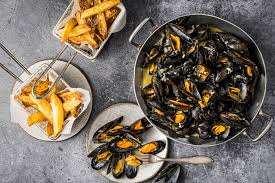
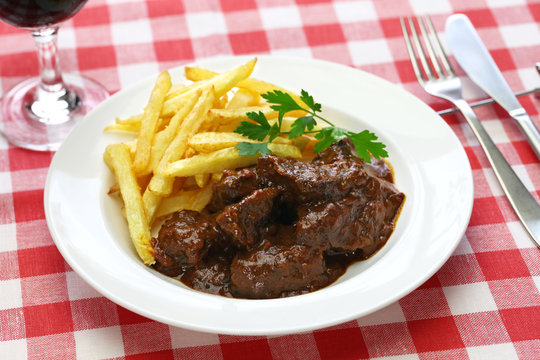
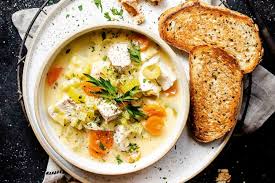

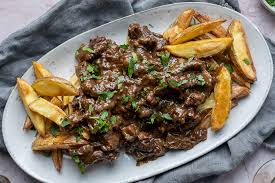


Architectural Wonders
Belgium is dotted with stunning architectural masterpieces that reflect its rich history and artistic heritage. From medieval castles to grand Gothic cathedrals, the country’s architecture is a visual feast for visitors.
The Grand Place in Brussels, a UNESCO World Heritage Site, is one of the most beautiful squares in Europe. Surrounded by ornate guildhalls and the stunning Town Hall, this central square hosts various events and festivals throughout the year.
The medieval city of Bruges is often referred to as the “Venice of the North” due to its picturesque canals and well-preserved medieval architecture. The Belfry of Bruges offers panoramic views of the city, while the Basilica of the Holy Blood houses a revered relic believed to contain the blood of Christ.
In Antwerp, visitors can admire the magnificent Cathedral of Our Lady, a prime example of Gothic architecture. The cathedral is home to several works by the famous Baroque painter Peter Paul Rubens, adding to its cultural significance.
Natural Beauty and Outdoor Activities
While Belgium is often known for its cities and cultural heritage, it also boasts stunning natural landscapes. The Ardennes, a picturesque region in the south, is characterized by rolling hills, dense forests, and charming villages. This area is perfect for outdoor enthusiasts, offering opportunities for hiking, cycling, and kayaking.
The High Fens, a unique natural reserve, is known for its bogs, wetlands, and rich biodiversity. Visitors can explore the numerous trails that wind through this tranquil landscape, making it a popular destination for nature lovers.
Art and Museums
Belgium has a rich artistic heritage, and its museums showcase a diverse range of art and history. The Royal Museums of Fine Arts of Belgium in Brussels feature works by renowned artists such as René Magritte and Paul Delvaux. The Magritte Museum, dedicated to the famous surrealist artist, is also a must-visit for art enthusiasts.
In Antwerp, the Museum aan de Stroom (MAS) offers a unique perspective on the city’s history and its connections to the world. The museum features a rooftop terrace with breathtaking views of Antwerp’s skyline.
The city of Ghent is home to the Museum of Fine Arts, which houses an impressive collection of Flemish art, including works by Jan van Eyck and Hans Memling.
Festivals and Events
Belgium is a country that loves to celebrate, and its calendar is filled with vibrant festivals and events throughout the year. From cultural festivals to food fairs, there’s something for everyone.
The Brussels Flower Carpet is a stunning event held every two years in August. The Grand Place is transformed into a vibrant tapestry of flowers, with thousands of begonias arranged in intricate patterns.
The Ghent Festival, held every July, is a lively celebration of music, theater, and art. This week-long event attracts artists and performers from around the world, transforming the city into a vibrant hub of creativity.
The Carnival of Binche, recognized by UNESCO as an Intangible Cultural Heritage, is a lively celebration that takes place before Lent. Participants don elaborate costumes and masks, creating a colorful spectacle that reflects the region’s traditions.
Transportation and Accessibility
Belgium’s central location in Europe makes it easily accessible from neighboring countries. The country has an extensive and efficient public transportation system, including trains, trams, and buses.
The Belgian railway network is one of the best in Europe, connecting major cities such as Brussels, Antwerp, Ghent, and Bruges. High-speed trains also link Belgium to cities like Paris and Amsterdam, making it convenient for travelers to explore beyond its borders.
Within cities, public transport options are readily available, making it easy to navigate and explore local attractions. Biking is also a popular mode of transportation, with many cities offering bike-sharing programs and dedicated cycling paths.
Conclusion
Belgium is a country that captivates visitors with its rich history, cultural diversity, and culinary delights. From the medieval charm of Bruges to the artistic vibrancy of Brussels and the historic significance of Antwerp, there is something for everyone to discover. Whether you’re indulging in delicious Belgian chocolates, exploring stunning architecture, or participating in lively festivals, Belgium offers a unique and unforgettable experience.
With its strategic location in the heart of Europe, Belgium serves as an ideal starting point for travelers looking to explore the wider region. As you embark on your journey through this captivating country, you’ll find that Belgium is more than just a destination; it’s a celebration of culture, history, and the art of living.

